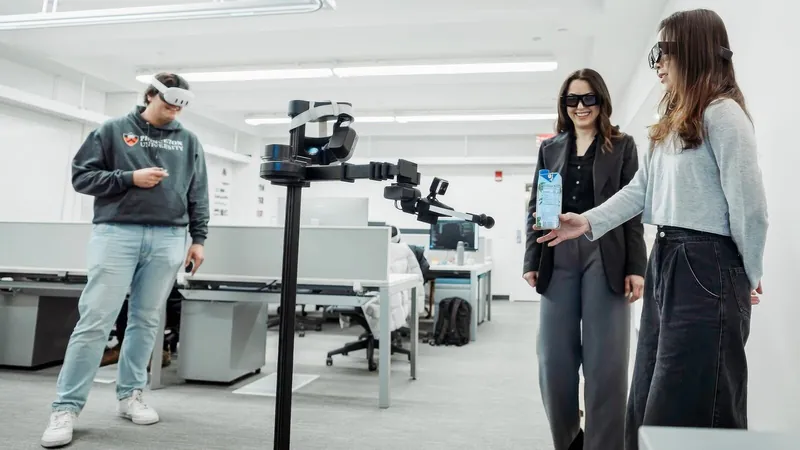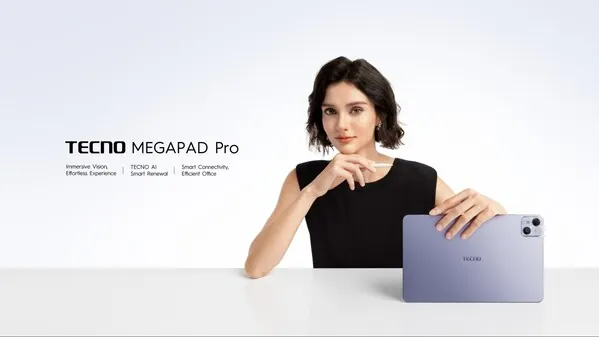
Revolutionizing Reality: Princeton's Groundbreaking Fusion of VR and Robotics
2025-08-25
Author: Mei
Unlocking a New Dimension of Interaction
Imagine a world where virtual reality (VR) and robotics combine to blur the lines between the digital and physical realms. Researchers at Princeton University are on the cutting edge of this innovative frontier, crafting experiences that could transform remote collaboration, education, entertainment, and gaming.
From Pixels to Physicality
As the technology matures, users will no longer just view virtual items; they will interact with them as if they were tangible. Assistant Professor Parastoo Abtahi envisions a future where mixed reality headsets enable seamless interaction with the physical world.
How It Works: A Robot's Role
Abtahi, alongside postdoctoral researcher Mohamed Kari, is developing a system where virtual items are controlled by a physical robot, enhancing user experience. Their groundbreaking research will be showcased at the ACM Symposium on User Interface Software and Technology next month in Busan, Korea.
Imagine Ordering Snacks from Thin Air!
Picture this: you’re wearing a mixed reality headset, selecting a drink from an on-screen menu, and placing it on your desk. Then, in a playful twist, you summon an animated bee to deliver a bag of chips straight to your sofa. Though initially just digital images, these snacks materialize before your eyes. But it’s no illusion; it’s an invisible robot making it happen!
The Magic of Seamlessness
Kari emphasizes the importance of removing all unnecessary technical details. By making the technology feel invisible, the experience becomes intuitive and effortlessly engaging.
Simplifying Communication: A Gesture-Based Approach
To enhance interaction, Abtahi and Kari have developed a gesture-based command system. This allows users to select objects, like a pen across the room, by simply gesturing, translating these movements into commands for the robot to follow.
3D Gaussian Splatting: Adding and Erasing Reality
Another innovative aspect of their work is the ability to manipulate what users see in real-time. By utilizing a technique called 3D Gaussian splatting, they can create realistic digital replicas of the physical space, allowing them to add or erase elements like a moving robot or an animated bee from the user’s field of view.
The Future: A Seamless Virtual and Physical Integration
The potential of Abtahi and Kari’s work extends far beyond just fun interactions; it paves the way for more meaningful engagements in education, work, and play. As this technology evolves, the future promises an extraordinary blend of digital and physical experiences that will redefine how we interact with our environment.


 Brasil (PT)
Brasil (PT)
 Canada (EN)
Canada (EN)
 Chile (ES)
Chile (ES)
 Česko (CS)
Česko (CS)
 대한민국 (KO)
대한민국 (KO)
 España (ES)
España (ES)
 France (FR)
France (FR)
 Hong Kong (EN)
Hong Kong (EN)
 Italia (IT)
Italia (IT)
 日本 (JA)
日本 (JA)
 Magyarország (HU)
Magyarország (HU)
 Norge (NO)
Norge (NO)
 Polska (PL)
Polska (PL)
 Schweiz (DE)
Schweiz (DE)
 Singapore (EN)
Singapore (EN)
 Sverige (SV)
Sverige (SV)
 Suomi (FI)
Suomi (FI)
 Türkiye (TR)
Türkiye (TR)
 الإمارات العربية المتحدة (AR)
الإمارات العربية المتحدة (AR)